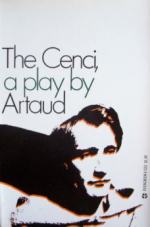|
This section contains 3,674 words (approx. 13 pages at 300 words per page) |

|
SOURCE: Smith, Paul. “Restless Casuistry: Shelley's Composition of The Cenci.” Keats-Shelley Journal 13 (winter 1964): 77-85.
In the following essay, Smith explores Shelley's alteration of his source material to emphasize moral and ethical concerns in The Cenci.
Sometime during the late summer or early fall of 1819, Shelley set about to write a preface to the play he had just finished, The Cenci. He wrote hurriedly, leaving sentences incomplete, sketching out the paragraphs as they occurred to him, paying little attention to continuity. He mentioned the Italian manuscript, the Guido painting, the interest the story had awakened in the social circles of Rome, and the moral implications he saw in the story of the Cenci family. He wrote:
It is in the restless casuistry with which we seek her justification, (who) with which we feel that she has done an unnatural deed, but urged to it by one (far) more unnatural...
|
This section contains 3,674 words (approx. 13 pages at 300 words per page) |

|


